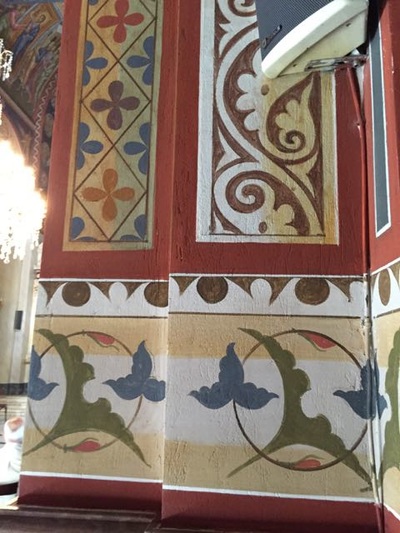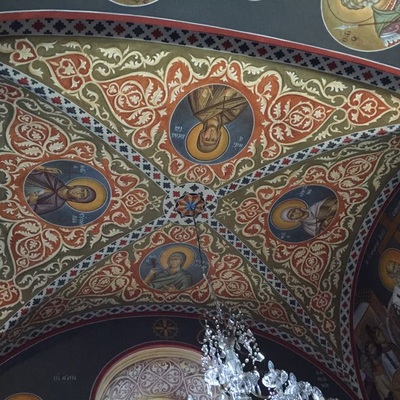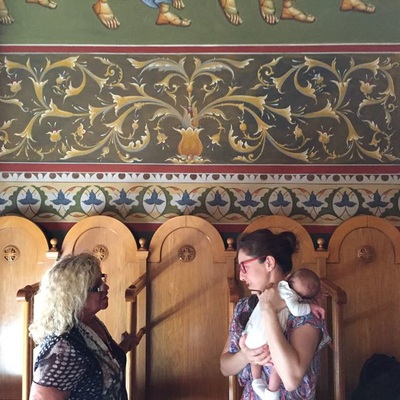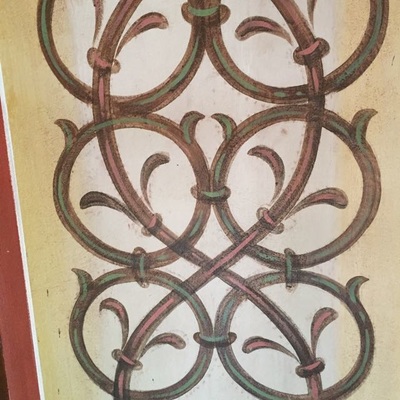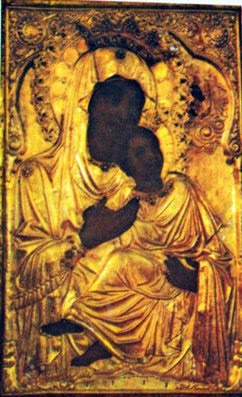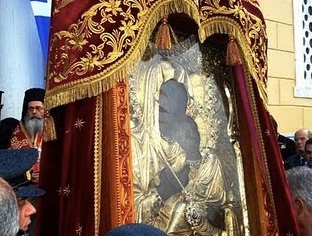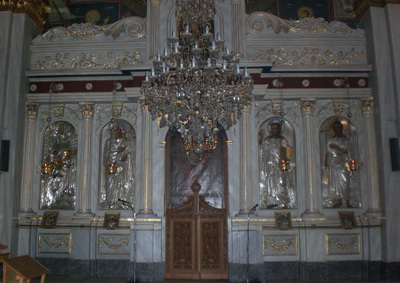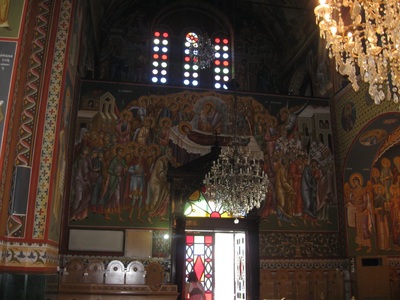Kalamata - a night on the Messenian Gulf
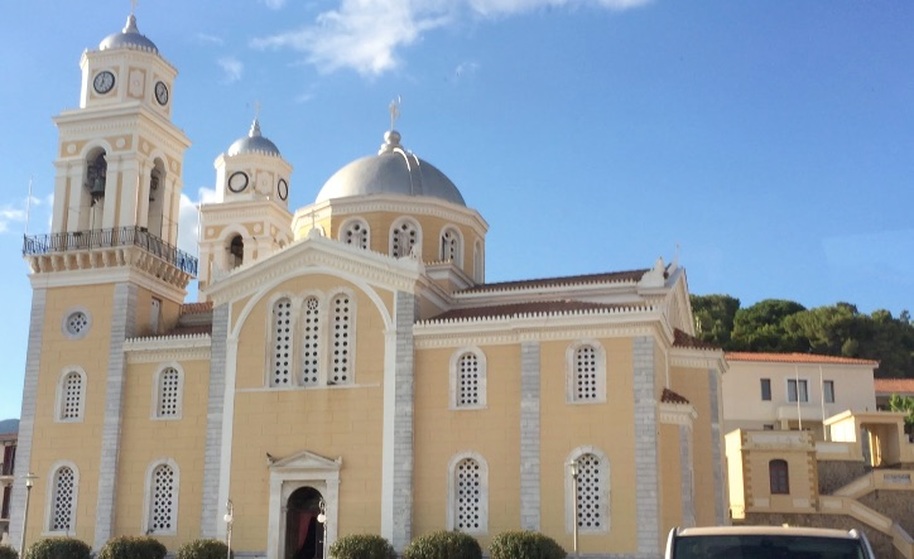 Metropolitan Cathedral of Ypapanti tou Sotiros in Kalamata.
Metropolitan Cathedral of Ypapanti tou Sotiros in Kalamata.
Think olives! right? Homer knew it as Pharai, an ancient city subject to Agamemnon. It sits at the base of Mt. Taygetos, in the area of Greece known as Messinia. Though it boasts an ancient Byzantine church, Holy Apostles, said to have been the site where the national revolutionaries swore to free Greece from Ottomon rule, it was the Metropolitan cathedral of Ypapanti that we visited, almost as an afterthought as we wandered the streets in search of an ecclesiastical fabric export shop. (The shop ended up to be a trinket haven with live birds in cages outside and thousands of scarves and the usual cache of printed icons inside.) We didn't really come to visit Byzantine churches here but to rest at a beautiful resort hotel for the night before our trek to Mystras.
Interestingly, the Ypapanti tou Sotiros (Presentation of the Lord in the Temple) church had services going on, including the "churching" of a 40 day old infant boy. It is a "modern" cruciform church with two bell towers, a large dome and narthex. The church was built in 1876, destroyed by earthquakes 100 years apart (1886 and 1986) and restored both times. It is know for the discovery of a famous healing icon of the Panageia/Theotokos. Each year there is a procession on the Feast Day of the Church (Feb. 2) and thousands come from all over Greece to venerate the icon and participate in the service.
The interior iconography is quite beautiful and we relished that in modern Greece iconographers are busy both restoring historical Byzantine frescoes and icons and painting new ones in contemporary Greek-Byzantine styles. I was quite interested in the decorative elements that separate the frescos as they were quite intricate and beautifully pulled together the entire interior canvas of the church.
Interestingly, the Ypapanti tou Sotiros (Presentation of the Lord in the Temple) church had services going on, including the "churching" of a 40 day old infant boy. It is a "modern" cruciform church with two bell towers, a large dome and narthex. The church was built in 1876, destroyed by earthquakes 100 years apart (1886 and 1986) and restored both times. It is know for the discovery of a famous healing icon of the Panageia/Theotokos. Each year there is a procession on the Feast Day of the Church (Feb. 2) and thousands come from all over Greece to venerate the icon and participate in the service.
The interior iconography is quite beautiful and we relished that in modern Greece iconographers are busy both restoring historical Byzantine frescoes and icons and painting new ones in contemporary Greek-Byzantine styles. I was quite interested in the decorative elements that separate the frescos as they were quite intricate and beautifully pulled together the entire interior canvas of the church.
